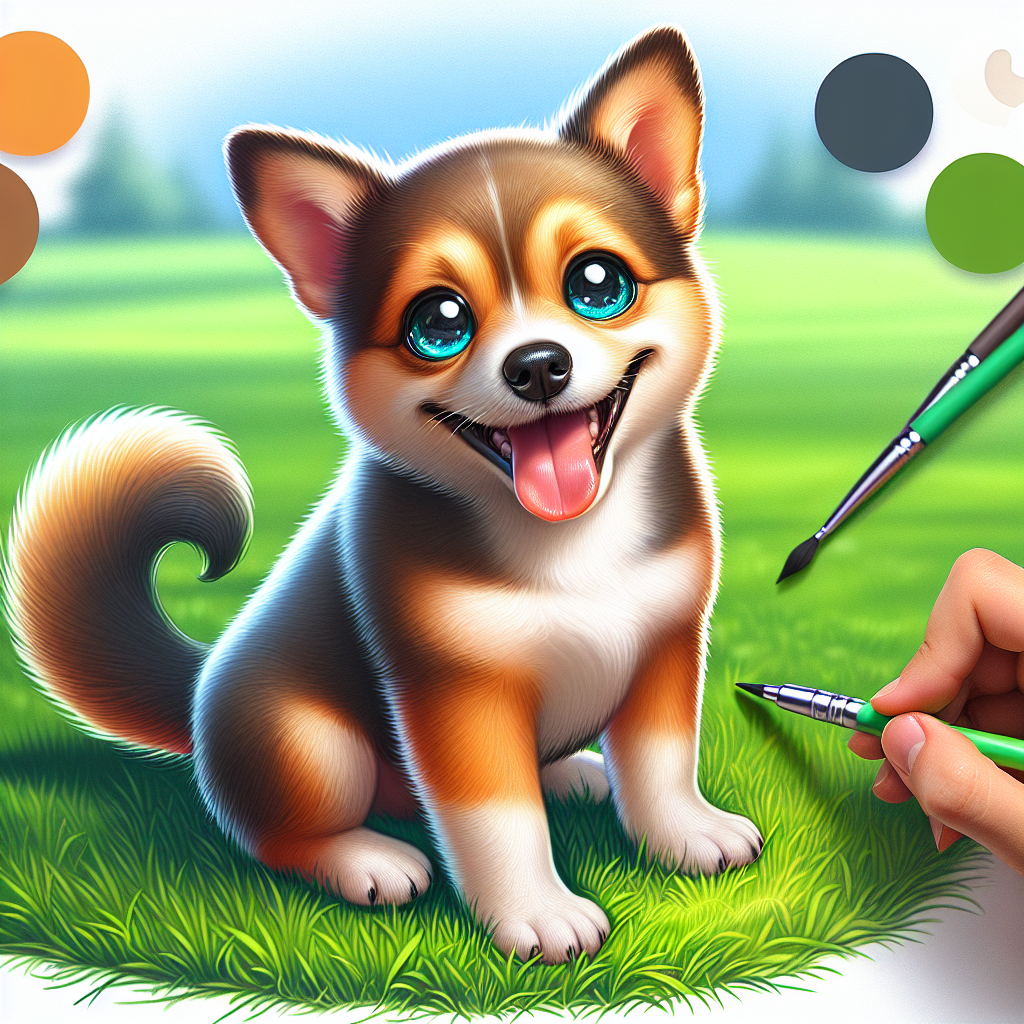Introduction

Alright, folks, let’s get real. Fleas—those tiny, elusive little boogers that seem to have a knack for invading our sanctuaries. If you’ve got pets, you know the drill. One minute you’re playing fetch in the yard, and the next you’re scratching at invisible itches, wondering if your home’s been declared a flea vacation spot.
Here’s the kicker: getting rid of these pests doesn’t have to mean turning your home into a chemical wasteland. There are ways—natural ways. And we’re talking fast, effective, and safe solutions. So, whether you’re a pet parent or just someone who’s had it up to here with uninvited guests, stick around. We’re diving into the world of natural flea control.
The War on Fleas: Understanding the Enemy
To win a battle, you’ve got to understand your enemy. Fleas are not just annoying; they’re persistent. These little jumpy critters can lay up to 50 eggs a day. That’s right, 50! Imagine a tiny flea factory right under your nose. If you’ve ever felt like your house is being overrun, that’s probably why.
Now, I’m no entomologist, but I’ve sat through enough flea fiascos to know their game. Fleas thrive in warm, humid environments. They hitch a ride on your pets and make themselves at home in your carpets, furniture, and bedding. And here’s the thing—once they’re in, they’re tough to evict. But not impossible.
The goal is simple: disrupt their life cycle. If you can stop them from reproducing, you’re halfway there. But don’t you worry, we’re not talking about anything crazy. Just smart, natural home flea remedies that’ll have you saying goodbye to those jumpy invaders.
Arming Yourself: Natural Flea Remedies
Now, let’s arm ourselves with some natural flea killers. First up, we’ve got the classics—herbal remedies. Essential oils like lavender, peppermint, and rosemary are not just for spa days. A few drops mixed with water can become a flea’s worst nightmare. Spray this concoction around your home, and you’ll send those fleas packing.
Then there’s the trusty apple cider vinegar. This stuff is everywhere, and for good reason. It’s like a Swiss army knife for home remedies. Mix it with water and give your pet a gentle rinse. Fleas hate the smell, and it can help keep them at bay.
Oh, and don’t underestimate the power of vacuuming. Regular sessions can suck up fleas, eggs, and larvae, breaking their cycle. It’s like a mini tornado for them, leaving them confused and homeless.
The Power of the Powder: Diatomaceous Earth and Salt
Let’s talk about the heavy hitters—diatomaceous earth and salt flea treatment. Now, I know what you’re thinking: “Diatomaceous what?” Don’t let the name fool you. This stuff is pure magic. It’s a natural powder made from tiny fossilized algae. Sprinkle it around your home, especially in flea-prone areas. It works by dehydrating the fleas, leaving them as dry as a bone. Just remember to use food-grade diatomaceous earth for fleas, and don’t go crazy with it. A light dusting will do.
Then we’ve got salt, the unsung hero. What’s cheaper and more plentiful than salt? Not much. Sprinkle it on your carpets and let it sit for a couple of days. The salt dehydrates fleas just like diatomaceous earth. It’s like a mini desert storm in your living room, and fleas don’t stand a chance.
Light Traps and Soapy Surprises: Unique Tricks to Try
Now, onto the quirky stuff. Ever heard of light traps for flea control? It’s as simple as it sounds. Fleas are attracted to light, so here’s a little trick: Grab a shallow dish, fill it with soapy water, and place it under a nightlight. Fleas jump towards the light, fall into the dish, and get trapped. It’s like a flea disco gone wrong.
Speaking of soapy surprises, a soapy water flea trap is another ace up your sleeve. It’s cheap, it’s easy, and it can catch a surprising number of fleas overnight. Just remember to change the water regularly to keep things fresh.
These are just some of the unique tricks you can try. They won’t break the bank, and won’t harm your pets or the environment. Just good old-fashioned ingenuity and a bit of elbow grease.
So, there you have it. A few simple steps and you’re on your way to reclaiming your home. It’s not about waging an all-out war. It’s about being smarter than the fleas. And with these natural remedies, you’re armed and ready. Thanks for hanging in there, and good luck in your flea-fighting adventures.
Natural Flea Sprays: Your DIY Arsenal
Alright, folks, gather ’round. We’re diving headfirst into the wild world of flea evictions. You’ve got your spray bottles and a dash of determination, and we’re going to make those fleas pack their bags. It’s not rocket science, but it’s gonna take some elbow grease and a bit of creativity. First up, let’s talk about those homemade flea sprays. Picture this: a spray bottle filled with a concoction you whipped up in your kitchen—no chemicals, no fuss. Just a bit of vinegar, some lemon juice, and a sprinkle of magic.
Here’s the deal with vinegar—it’s the unsung hero of natural flea control. A simple DIY flea spray recipe can be your ticket to a flea-free home. Mix equal parts of vinegar and water, add a splash of lemon juice for that extra flea-fighting kick, shake it like you mean it, and spray away. Think of it as your homemade potion against those little jumpers. This isn’t just about getting rid of fleas fast; it’s about doing it naturally, without turning your home into a chemical war zone.
But hey, don’t just take my word for it. Roll up those sleeves, and give it a go. You’ll feel like a mad scientist, but instead of world domination, you’re after flea domination. And the best part? It’s as cheap as chips. If you’ve got vinegar and lemon, you’re already halfway there. So, get spraying and watch those fleas flee—pun intended. You might even find yourself enjoying this little DIY adventure.
The Power of Essential Oils: Fleas’ Natural Foe
Next, let’s chat about essential oils. Lavender, peppermint, and cedarwood aren’t just for your diffuser, my friend. They’re nature’s way of saying, “Fleas, be gone!” The beauty of essential oils for fleas lies in their simplicity and effectiveness. These oils are like a gentle whisper of nature that says, “Not today, fleas.”
Now, you might be wondering how to use these oils in your quest to get rid of fleas in the house fast and naturally. The process is straightforward—grab some essential oils, mix a few drops with water in a spray bottle, and you’ve got yourself a natural flea-repelling mist. Lavender oil is soothing, cedarwood is strong, and peppermint—well, it’s the minty fresh wake-up call fleas never wanted.
And here’s a little secret—essential oils aren’t just for the house. You can use them on your pets too, but remember to be gentle. Dilute them properly, and avoid using oils that might be too harsh on your furry friends. It’s all about natural flea control for pets, after all. So, go ahead and give it a try. Your home will smell divine, and those fleas won’t know what hit them.
Housecleaning Hacks: Making Fleas Unwelcome
Now, for the cleaning. We’re not talking about some half-hearted dusting. Nope, it’s time to get down and dirty. Vacuum like you mean it. Those pesky fleas don’t stand a chance against a determined vacuum cleaner. Flea control starts with a clean house, and there’s no shortcut here.
It’s not just about vacuuming the floors, though—get those nooks and crannies, the corners where they think they can hide. Trust me, they’re there, plotting their next move. But with a vacuum in hand, you’ve got the upper hand. Vacuum daily, if you can. And don’t forget to empty that bag or canister outside, unless you want them making a comeback.
But wait, there’s more! Washing your pet’s bedding in hot water is another great home remedy for flea infestations. Make it a weekly habit, and you’ll be saying goodbye to fleas faster than you can say “flea infestation.” It’s the little things, folks. They add up.
Dealing with Fleas on Pets: A Gentle Approach
And our furry friends? They need a little TLC too. Think gentle, think natural. It’s all about finding that sweet spot where you’re not just throwing chemicals at the problem. Safe flea treatments for dogs are a must. Our pets trust us, and it’s up to us to keep them safe.
There are plenty of natural flea control options for pets. Start with a gentle bath using a mild soap—Dawn dish soap is a popular choice. It’s gentle yet effective. After the bath, a flea comb works wonders. Comb through their fur and watch those fleas disappear. It’s oddly satisfying, like popping bubble wrap.
For a little extra flea-fighting power, try a homemade flea collar. Soak a bandana in a mixture of water and essential oils (like lavender or cedarwood), let it dry, and tie it around your pet’s neck. It’s like a flea-repelling fashion statement.
Flea-Repelling Plants: Nature’s Silent Warriors
Finally, let’s bring out the big guns—plants. Yep, Mother Nature’s secret weapon against fleas. They sit quietly, looking pretty, while silently waging war on any flea that dares to enter. Flea-repelling plants indoors are a game-changer.
Consider plants like rosemary, mint, and lemongrass. They’re not just for cooking or cocktails. These plants exude natural oils that fleas despise. Place them strategically around your home, and let them do their thing. It’s like having a silent army on your side, always vigilant, always ready.
And hey, don’t underestimate the power of a well-placed potted plant. Not only do they help with fleas, but they also make your home feel like an oasis. So, why not kill two birds with one stone? Get rid of fleas fast and naturally while sprucing up your décor.
So, there you have it. You’re armed with knowledge, and it’s time to take back your home. Thank you for sticking with me through this flea-ridden adventure. Go forth, and may your home be flea-free soon!
Alright, folks, let’s wrap this up. We’ve wrestled with the flea circus long enough. Those tiny acrobats might think they own the place, but we’re about to show them the door once and for all.
How to Use Essential Oils to Deter Fleas
So, you’re standing in your living room, a little bottle of essential oil in hand, and you’re thinking—can this really work? Trust me, it can. Essential oils for fleas in the house are like kryptonite to these little critters. Dab a bit of cedarwood or lavender here and there, and you’ve got yourself a flea eviction notice. Don’t worry, your home won’t smell like a spa retreat. We’re talking subtle scents that send fleas packing. The trick is to apply these oils where your pets frequent—bedding, favorite nap spots, and around entry points. These natural flea deterrents work wonders without the side effects of chemical sprays. It’s like giving your home a little aroma therapy session while kicking those fleas to the curb.
Natural Flea Traps: DIY Solutions
Remember those sticky fly traps from your grandma’s kitchen? Well, it’s time to get crafty. You can whip up a homemade flea trap with some dish soap and a bowl of water. It might sound like a science experiment gone wrong, but hear me out. Place it under a nightlight, and watch those critters take the plunge. The light attracts them, and they dive into the soapy water, never to return. This DIY flea trap solution is cheap, easy, and surprisingly effective. You don’t need a degree in chemistry for this—just a nightlight and a bit of soap. It’s like a little flea pool party, but with a decidedly unhappy ending for them.
Keeping Your Home Flea-Free with Regular Maintenance
Here’s the secret sauce—consistency. Vacuum like you’re on a mission. Seriously, put on some tunes and go to town. It’s not just about getting rid of the visible dirt; it’s about sucking up flea eggs and larvae hiding out in your carpet. Wash those pet beds often. It’s like brushing your teeth; skip it, and you’re asking for trouble. Regular flea prevention maintenance is key to keeping the flea population at bay. It’s not glamorous, but it works. Think of it as a workout—tedious, but the results speak for themselves. And hey, your home gets cleaner in the process. Win-win, right?
The Role of Flea-Repelling Plants in Your Home
Imagine this—plants that not only look pretty but also keep fleas at bay. Lemongrass, mint, and rosemary are not just for cooking. These green wonders can help keep your home a flea-free zone. Flea-repelling plants indoor add a touch of nature to your decor while sending fleas scurrying for cover. Place them near doorways, windows, or wherever your pets hang out. It’s like having tiny green bouncers at the door, turning away unwanted guests. Plus, you’ll have fresh herbs at your disposal. Not a bad deal, huh? Just remember, consistency is key. Water them, keep them healthy, and they’ll return the favor by keeping fleas at bay.
Final Thoughts: Maintaining a Flea-Free Sanctuary
You’ve come this far. Keep up the good work. With a bit of effort and some natural know-how, you’ll keep those pesky fleas in check. It’s not about a one-time fix; it’s about creating an ongoing routine that keeps your home flea-free naturally. Thanks for sticking with me on this wild ride. Here’s to a flea-free home—and maybe a little peace and quiet for a change. Cheers to you, the unsung hero of your household, battling the flea invasion with grit and determination. Keep fighting the good fight, and remember—you’ve got this.
Quick Takeaways:
Alright, we’re in the final stretch. So, you’re probably looking around at your living room battlefield and thinking, “How do I get rid of fleas in the house fast naturally?” Well, let’s break it down. First, you’ve got your DIY flea spray recipe in hand, a mix of vinegar and lemon juice ready to wield as your weapon. Essential oils like lavender and cedarwood—those little bottles of natural flea killers—are your next line of defense. Dab them around the house, and say goodbye to those pesky fleas.
Next, it’s time to get physical. Vacuuming isn’t just a chore anymore—it’s your daily workout. Go over every nook and cranny; those fleas won’t know what hit them. And don’t forget your furry friends. Natural flea control for pets is all about gentle care, no harsh chemicals needed. A good bath with a bit of soapy water can do wonders.
For the last trick up your sleeve, consider flea-repelling plants indoors. Rosemary and lemongrass aren’t just for the kitchen—they’re silent warriors in your fight against fleas. Plant them, and let them work their magic. Keep at it, and your home will be a no-flea zone before you know it. You’ve got this!
FAQs:
1.
How do I get rid of fleas in the house fast naturally?
So, you’re itching to get rid of those fleas, huh? Start with a DIY flea spray recipe using vinegar and lemon juice. Spray it around your home, focusing on flea-prone areas. Follow that up with essential oils for fleas. Dab cedarwood or peppermint oil in corners and on pet bedding. Consistency is key—keep vacuuming and washing pet items. And don’t forget your secret weapons: diatomaceous earth and salt flea treatment. Sprinkle them on carpets and let them sit before vacuuming. You’ll see results quicker than you think.
2.
What are some natural flea control methods for pets?
Keeping your pets flea-free is a priority. Bathing them with a gentle soap can help remove fleas. For a natural flea control for pets, try adding a few drops of cedarwood or lavender oil to the bath. Make sure to check with a vet first. Regular grooming and washing their bedding frequently also keep fleas at bay. And guess what? Fleas aren’t fans of vinegar, so a vinegar rinse can be your pet’s new best friend.
3.
Can I use diatomaceous earth for fleas inside my house?
You bet! Diatomaceous earth is like kryptonite for fleas. It’s a fine powder made from fossilized algae. Sprinkle it on carpets and pet bedding. Let it sit for a day or two, then vacuum it up. It’s a natural flea killer that dehydrates fleas. Just be cautious—use food-grade diatomaceous earth, and avoid inhaling it. It’s all about safe flea treatments for dogs and humans alike.
4.
How effective are light traps for flea control?
Light traps aren’t just for flies! They can work wonders for fleas too. Set up a light trap by placing a small lamp over a bowl of soapy water. Fleas are attracted to the light and will leap to their doom in the water. It’s a simple, cost-effective way to reduce flea numbers. Pair it with other home flea remedies for the best results.
5.
What plants help repel fleas indoors?
Mother Nature’s got your back with flea-repelling plants. Plants like rosemary, mint, and lemongrass release natural oils that fleas detest. Place them around your home, and they’ll silently ward off fleas. They also add a bit of green to your space—win-win! Just remember, while they help, they work best as part of a broader natural flea control strategy.
Conclusion:
Alright, my flea-fighting comrades, we’ve reached the end of this saga. How to get rid of fleas in the house fast naturally? Well, it might not happen overnight, but with some patience and the right tools, it’s doable. From whipping up a DIY flea spray to setting up a soapy water flea trap, you’ve got a full arsenal at your disposal.
Remember, it’s all about persistence and using what Mother Nature gave us. Those tiny pests might be relentless, but you’re tougher. Keep vacuuming, keep using those essential oils, and keep planting those flea-repelling wonders. You’ve got the knowledge, and now it’s time to put it into action. Here’s to a flea-free home and a little peace of mind! Thanks for sticking it out with me. Go get ’em, tiger!
References:
1. https://www.marthastewart.com/how-to-get-rid-of-fleas-in-the-house-fast-11716197
2. https://www.webmd.com/pets/ss/slideshow-fleas-natural-remedies
3. https://www.healthline.com/health/healthy-home-guide/how-to-get-rid-of-fleas
4. https://www.countryliving.com/uk/homes-interiors/interiors/a33630251/how-get-rid-fleas/
5. https://www.thespruce.com/homemade-flea-repellent-1388143
Our solution eradicates fleas on contact without harmful chemicals, ensuring a safe environment for your pets and family. Easy to use and highly effective, SayByeBugs helps you maintain a flea-free home. Learn more and order today at SayByeBugs.com
Our solution eradicates fleas on contact without harmful chemicals, ensuring a safe environment for your pets and family. Easy to use and highly effective, SayByeBugs helps you maintain a flea-free home. Learn more and order today at SayByeBugs.com









